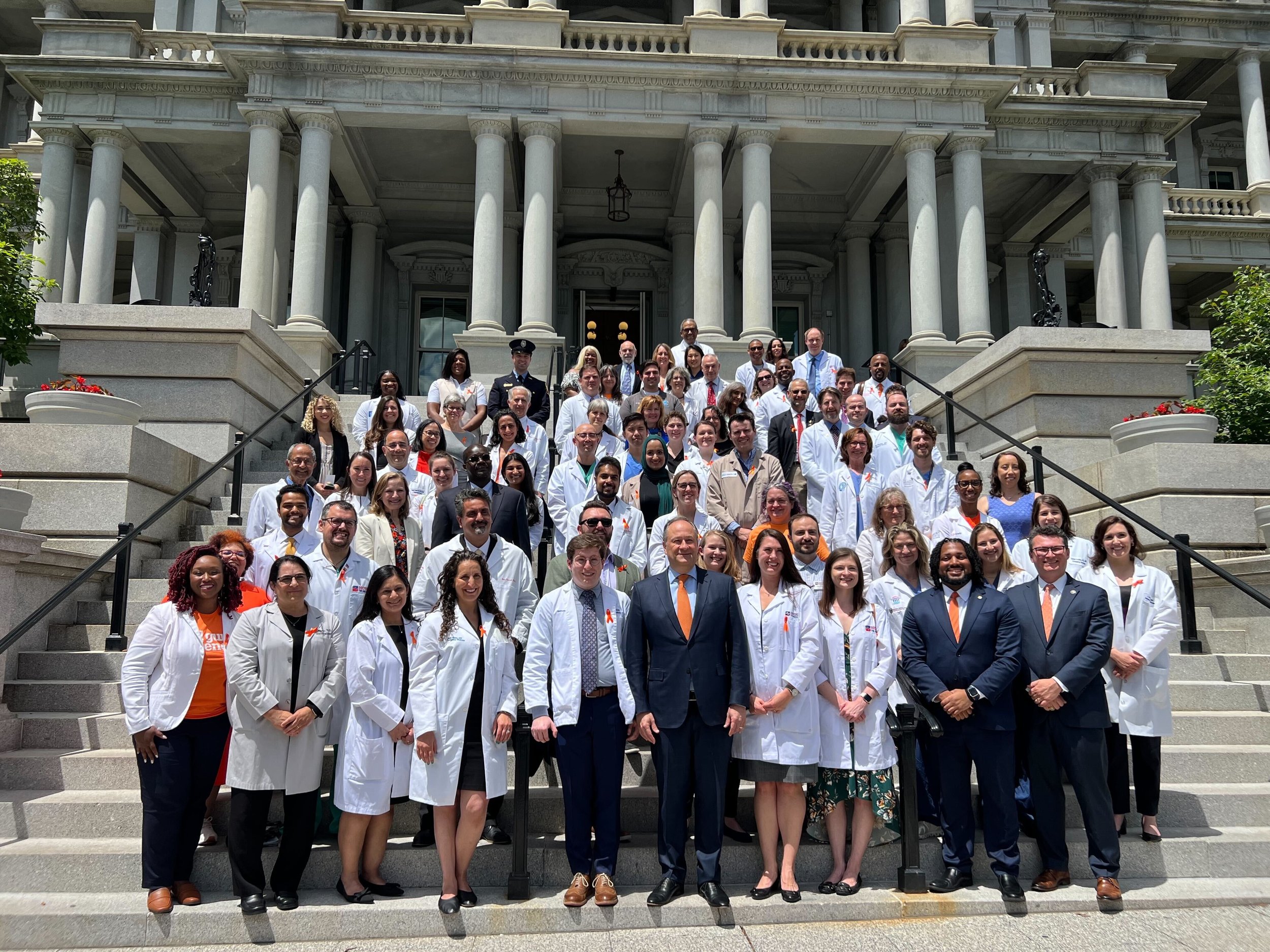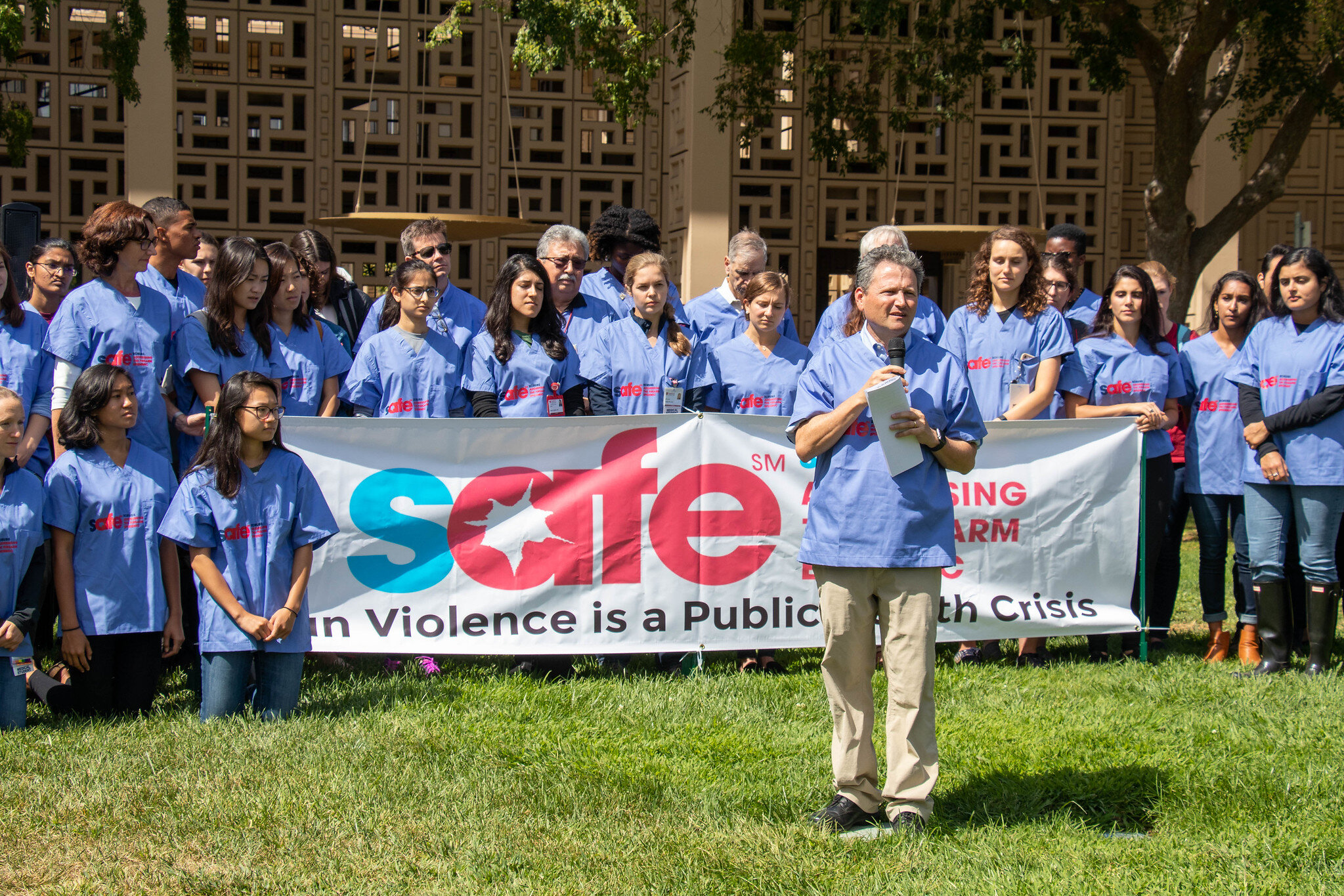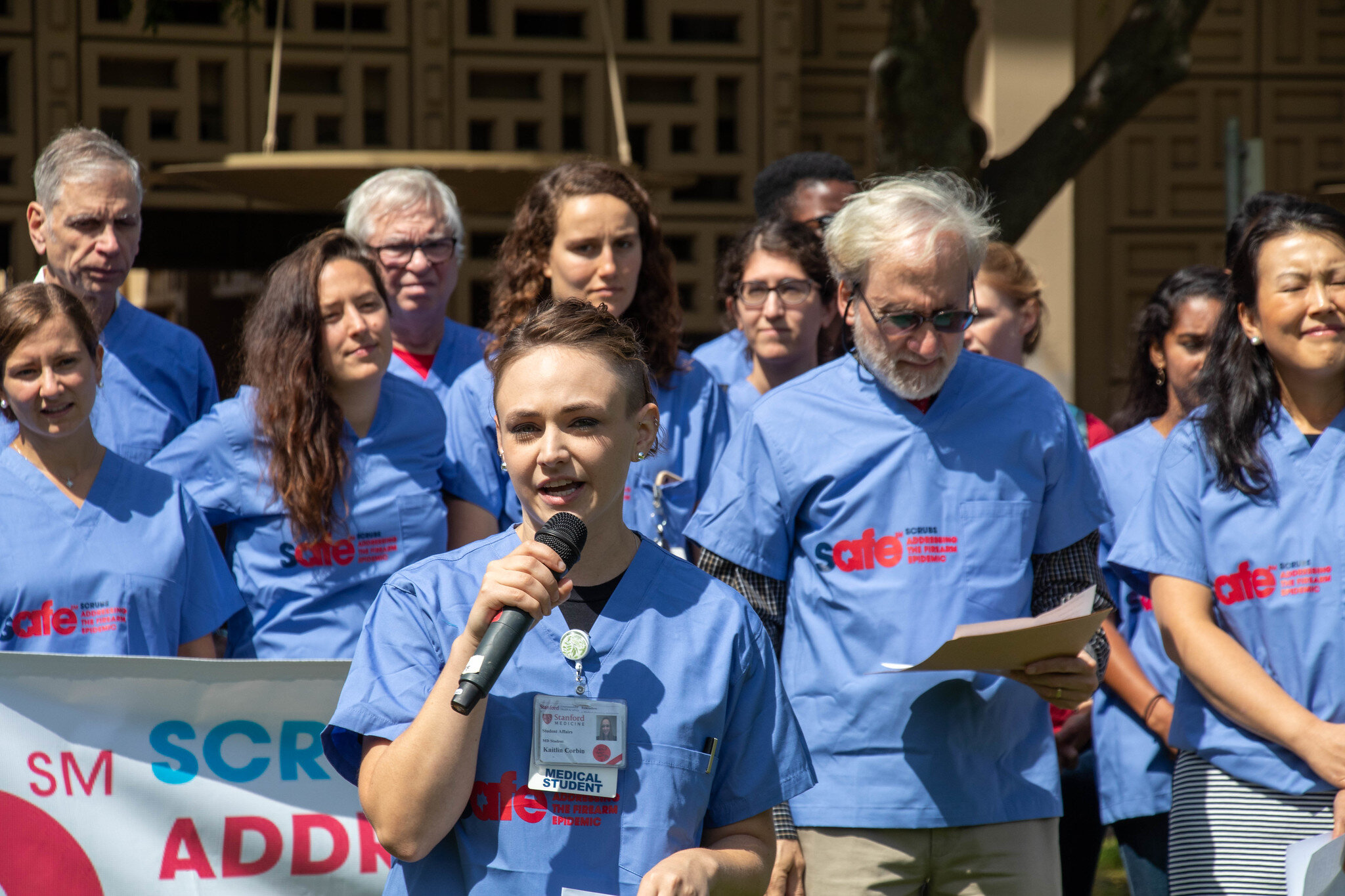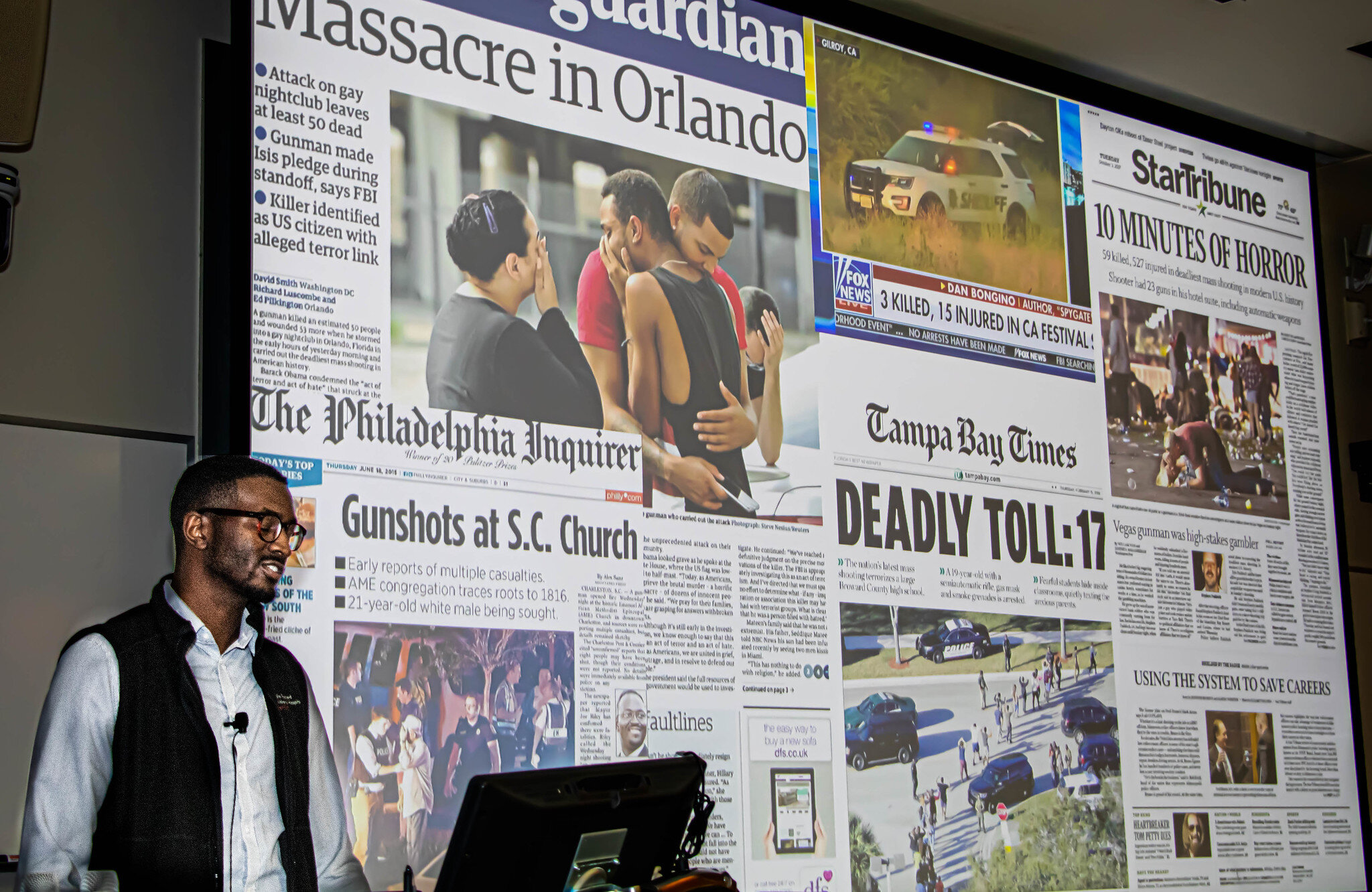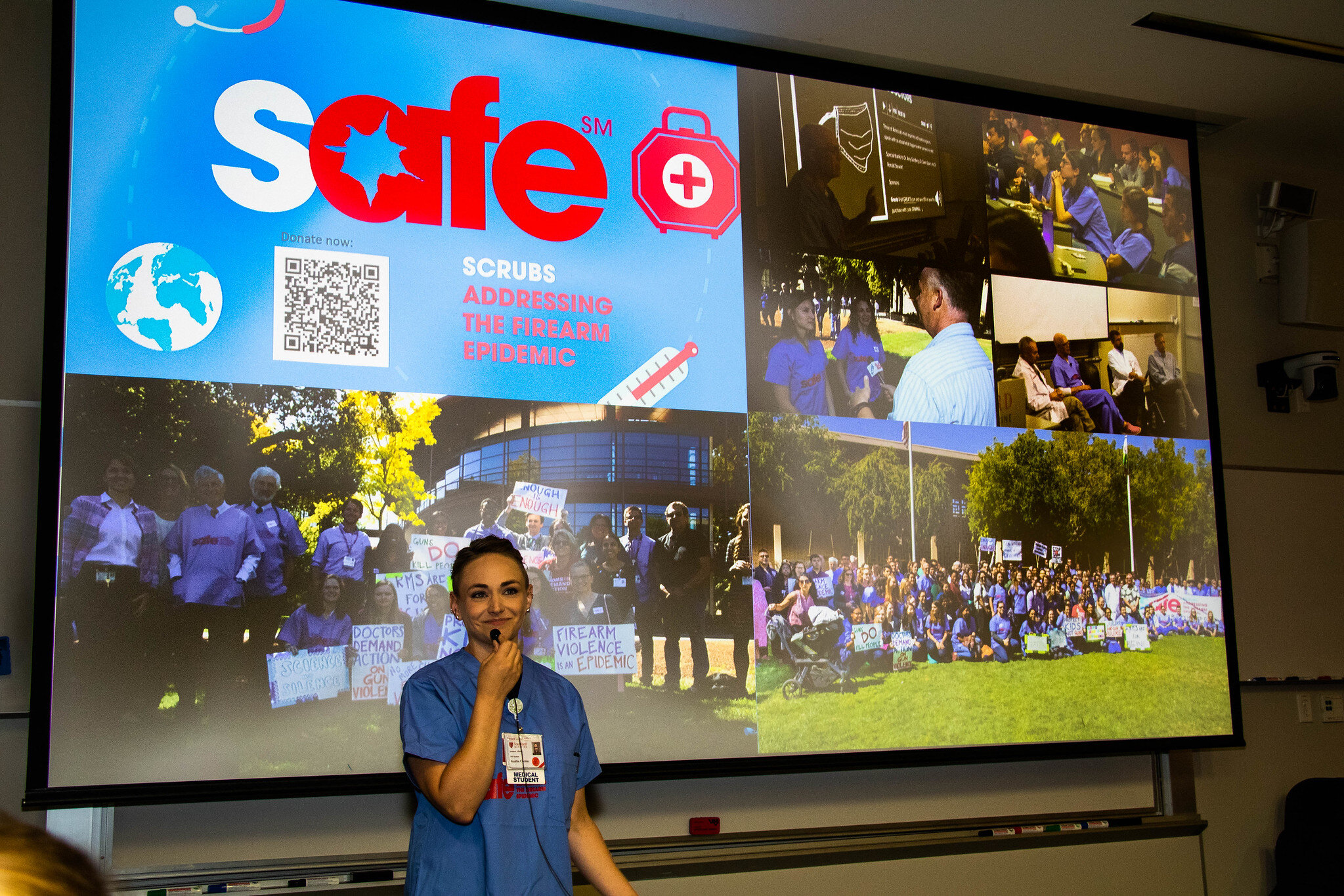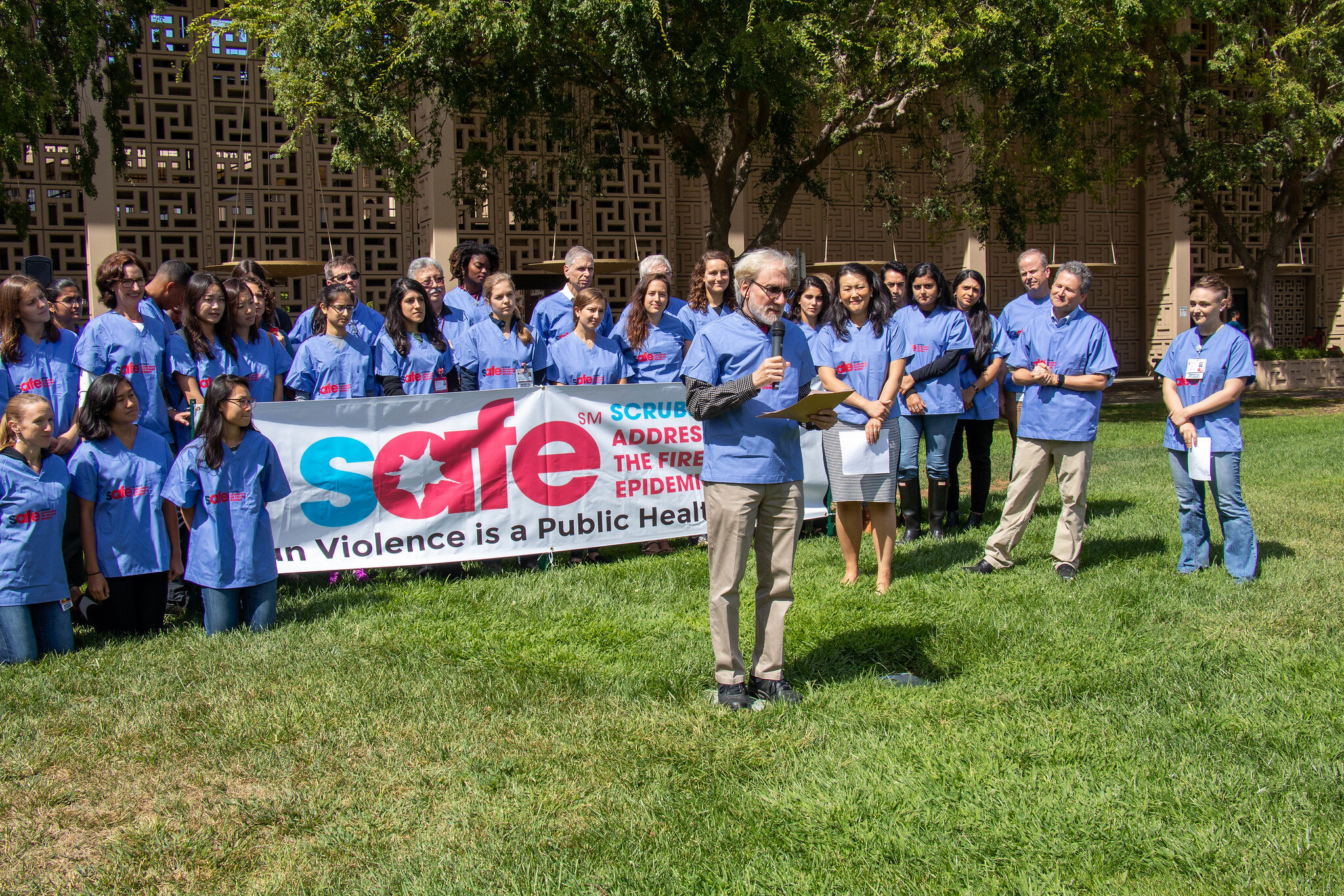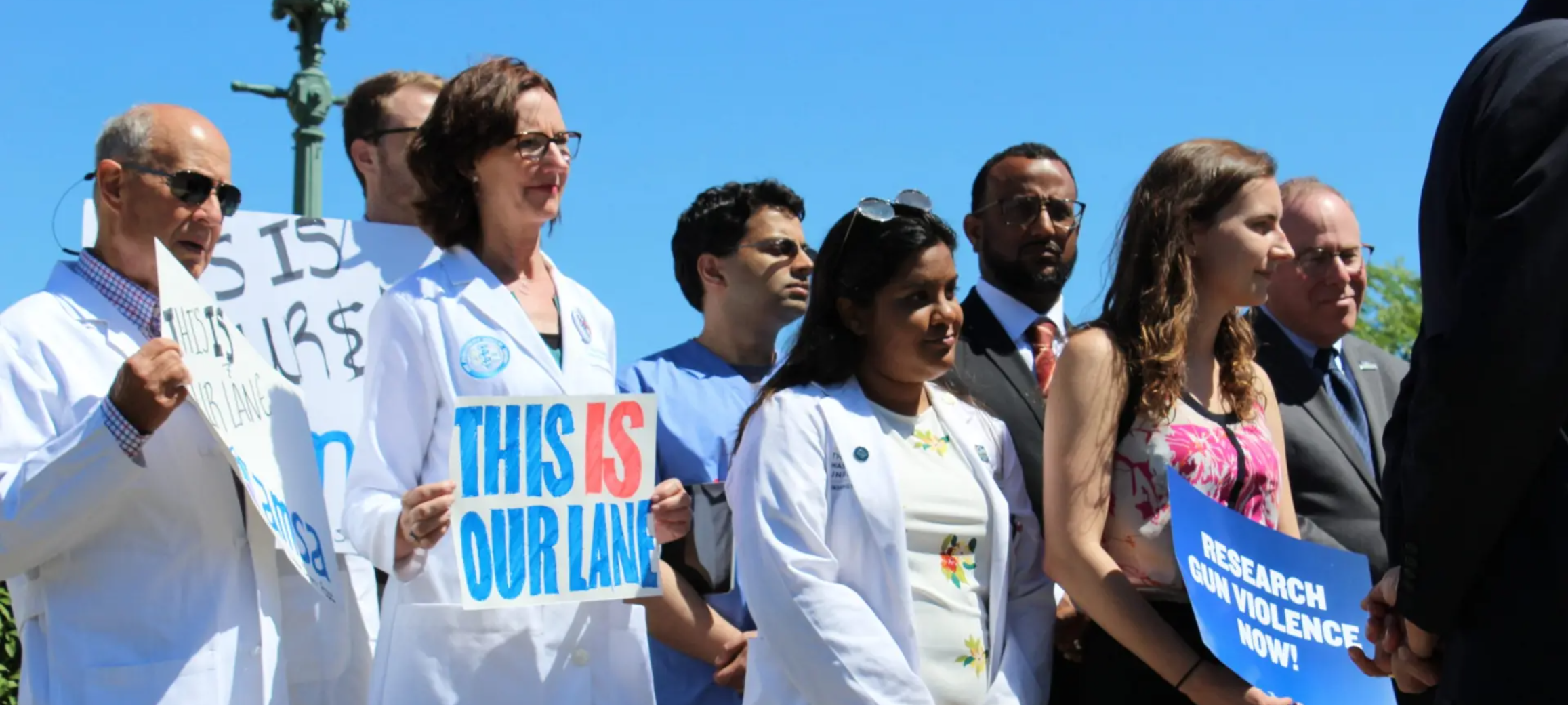We are U.S. physicians, nurses, and healthcare professionals dedicated to eliminating the American firearm violence epidemic through research, education, and evidence-based policy.
Updates from SAFE
Donate to SAFE
SAFE relies on the generosity of private foundations, institutional sponsors and individuals whose contributions empower this vital work.
Join the SAFE One Thousand, or donate $150, we’ll send you a SAFE scrub top.
“Clinicians and Firearms”
SAFE education modules
90-minute free online curriculum modules
includes free continuing medical education credit for physicians and advanced practice providers
host a watch party for students and residents!
SAFE Goals
Make firearm injury prevention education a priority at every United States medical school.
Be the leading source of medical education materials on effective ways to teach firearm injury prevention strategies to medical students.
Provide current and future healthcare clinicians the skills necessary to engage patients, communities, local, and national legislators on public health driven solutions for firearm injury prevention.
Develop a robust research wing of SAFE to establish evidence-based best practices for medical student firearm prevention education.

